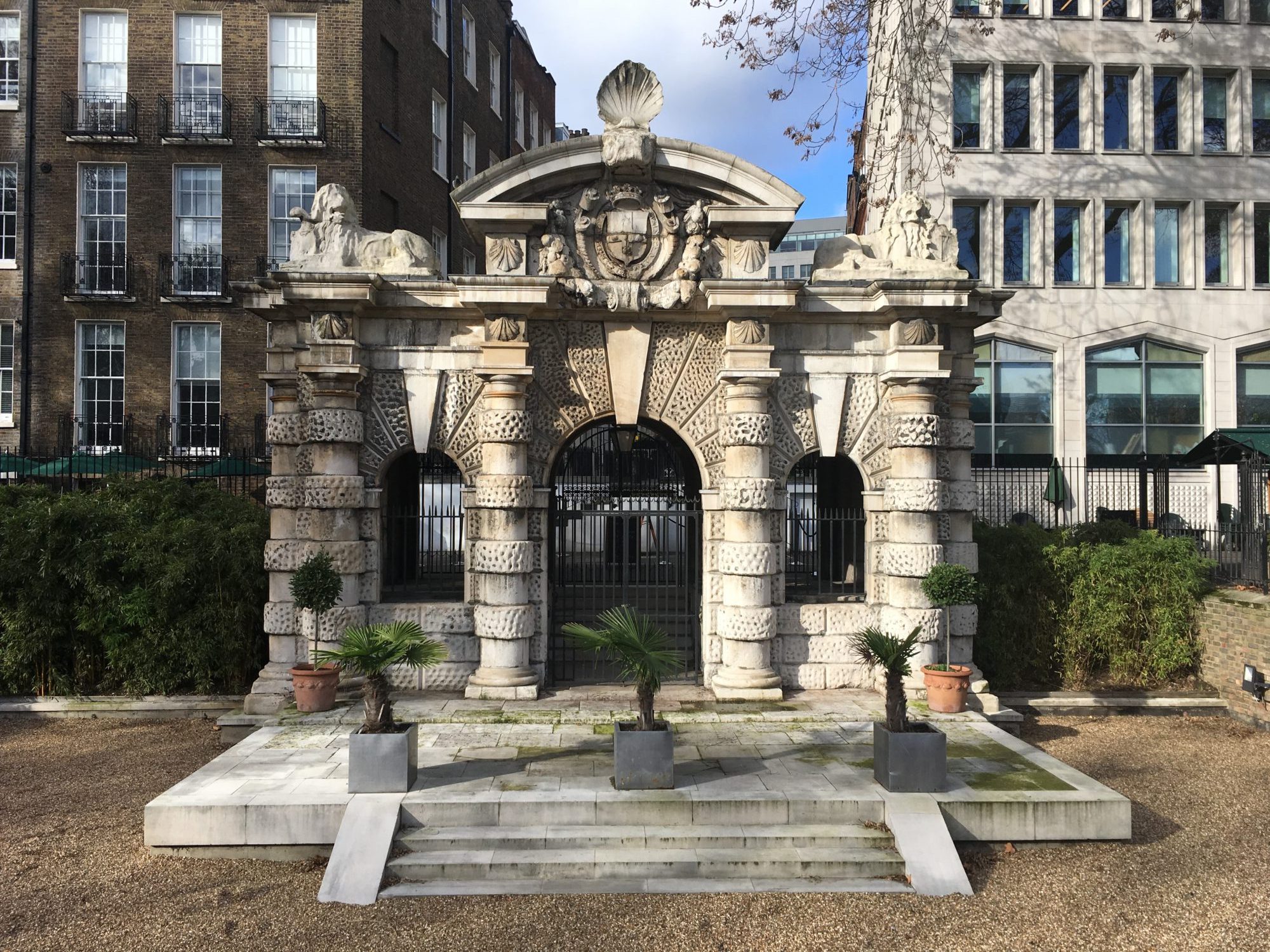Yesterday morning, on my way from A to B, I went through the backstreets of Covent Garden.
I didn’t have much time, but the sun was shining and a chilly wind was blowing. It was bright and fresh, with a sense of bustle in the air; delivery trucks were negotiating narrow streets, builders were shouting up and down scaffolded facades.
In the few minutes that it took to go along Maiden Lane and Chandos Place, cross the Strand and down Villiers Street, it struck me for the umpti-millionth time, how lucky I am to live in this wonderful city. So much to see, so much going on, so many colours and corners, shop windows and signs.
As I turned into Maiden Lane, Rules restaurant, all rich red awnings with swirling gold lettering and velvet curtains at the windows, was launching into another lunch-time. It looked opulent and unchanging.
Opposite, next to the stage door of the Adelphi Theatre, a discrete entrance, topped by the royal crest, indicates the private portal available for royal visitors. Perhaps they came to see the daring French operettas performed here in the later nineteenth century? Alongside is a small plaque, commemorating the murder of the notable actor William Terriss in 1897. He was stabbed – on this very spot – by a fellow actor as he went into the theatre, the assassin eventually being committed to Broadmoor, where he died in 1937.

The royal arms above the private entrance to the Adelphi Theatre, on Maiden Lane.
A little further along, on the corner of Chandos Place and Bedford Street, stands the splendid red brick and terracotta edifice built in 1876 by architects Lockwood and Mawson, builders of some of the finest public buildings in Bradford, for the Civil Service Supply Association. This grand sounding shop began as a co-operative venture by Post Office clerks, clubbing together to buy groceries more cheaply in bulk, with the resulting department store continuing to operate right through until 1982. On the Chandos Place façade another plaque records that Charles Dickens had worked in a building on the site between 1824-25 – when he was only 12 year sold.
This was the period Dickens spent working at Warren’s Shoeblacking factory, forced to work ten hours a day pasting labels on bottles of shoe polish to help support his family during one of his father’s financial crises. The trauma stayed with him for life, reappearing in different forms in many of his novels, especially in David Copperfield. However, his description of the blacking warehouse was that it was on Hungerford Stairs, which would place it on the other side of the Strand, very close to the river. These rat-infested wharfs and warehouses were swept away in the building of Charing Cross Station, the Victorian sewers and the Embankment.
Turning down Agar Street you find the remains of a famous act of cultural vandalism, still visible high up on the third floor of what is now Zimbabwe House. Here, opposite the classical elegance of buildings by John Nash and Decimus Burton is the angular modernity of 429 Strand, originally built in 1908 by Charles Holden (later to create some of the finest Art Deco Underground Stations) as the home of the British Medical Association.
Holden commissioned sculpted figures from Jacob Epstein to flank the windows on the third floor. So powerful and realistic were these images of the ages of man that there was an outcry and calls for them to be removed. While they did survive for a while, once the building had been bought by Rhodesian High Commission in the 1930s the sculptures were deemed ‘unsafe’. Despite protests, all the portions that protruded from the building were chipped away, leaving the figures without hands, feet, arms and faces. Only the ghosts of the figures remain – but enough to tell you that these were once powerful images!

The third floor windows of what is now Zimbabwe House, showing the remains of the Jacob Epstein figures.

Having crossed the Strand, I went down Villiers Street. The steep descent to the river is rather like a canyon, with the bulk of Charing Cross Station on the right and the narrow street getting darker as you approach Embankment Gardens. Rudyard Kipling lived down here for a while, in what I imagine must have been rather gloomy bachelor chambers.
But at the end of the road the gardens open out before the river, and you can see the tip of Cleopatra’s Needle shining in the sun. Nestling in the gardens stands one of the few surviving structures of Inigo Jones, builder and surveyor to the Stuart monarchs, James I and Charles I.
This is the York Watergate, in effect the garden gate of York House – built for the royal favourite, George Villiers, Duke of Buckingham in 1626. York House was one of the grandest and most prestigious of the great houses of London with its garden coming right down to the waters of the Thames. With no Embankment in place the dukes and their visitors could come and go from their own landing stage, entering the ducal demesne through this magnificent portal.

The York Watergate, built by Inigo Jones in 1626, is the last vestige of the palace of the Dukes of Buckingham beside the river Thames.
Ten minutes on a sunny morning in London and I’d seen the site of a murder, some scandalous sculpture and a ducal back-door, not to mention pondering the childhood influences of our greatest English novelist.
